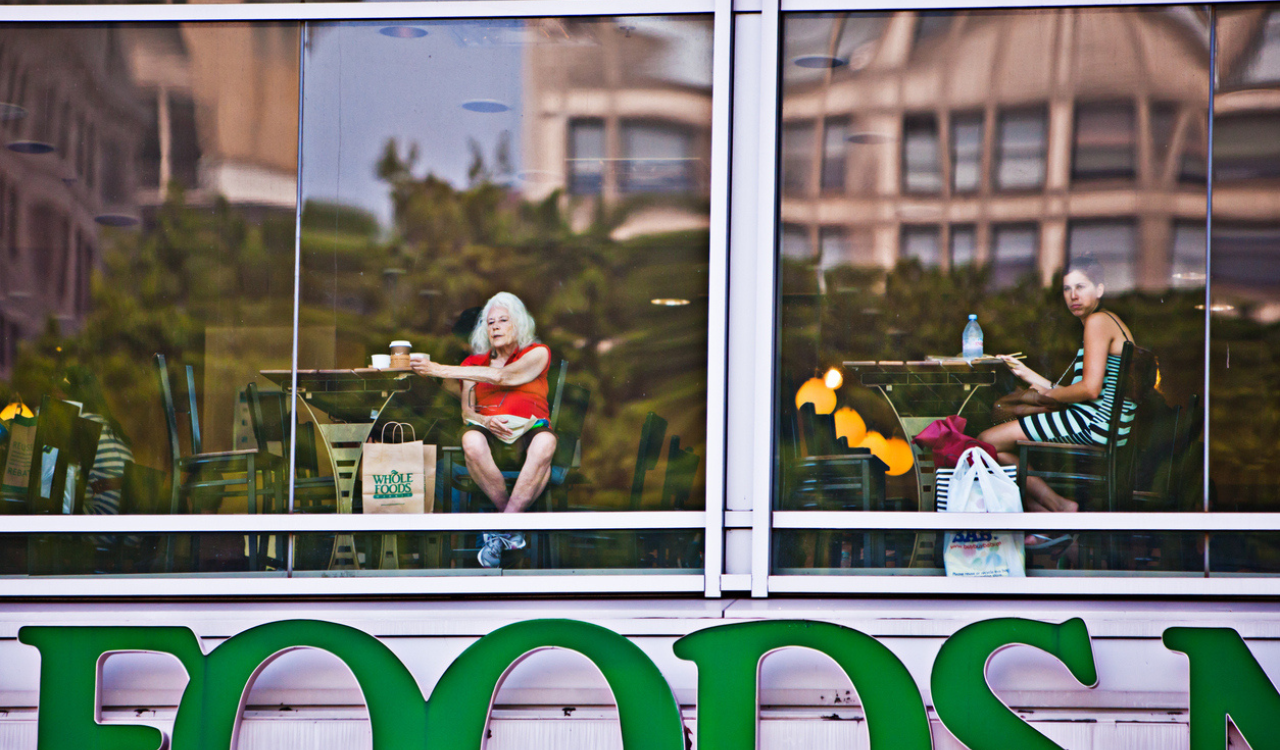Remember Moliere’s observation? “Writing is a little bit like prostitution. First, you do it for love. Then you do it for a few friends. Then you do it for money.” Turns out that applies to social media posts as well. If my 24-year-old pioneer daughter is any indication, Me-tailing is the new DTC.
Next-gen shoppers love Me-tailing. From a meta-perspective, it augers in an entirely new and potentially thrilling relationship between consumer and consumption. It is genuine disintermediation: The next wave of capitalism hits the shoreline, as the tech tide flows in.
So, it’s very tough to be the last major legacy retailer in the last mall standing facing Me-tailing.
The Mattie Newlin Saga
Presenting Mattie as a use case study, it’s instructive to consider the trajectory of the professionalization of her online feeds. She began more than a decade ago with a single-digit edition of an iPhone. She took photos taken then emailed or shared them via Facebook. That didn’t last long. Soon enough something called “The Mattie Newlin Show” began appearing on YouTube. (She removed most of the funniest episodes when wannabe bullies at her Jesuit high school mocked them. But hey! Nobody ever said it’s easy to be creative in front of people.) By college she had the full roster of media at her fingertips to share the news of her good and bad times: Instagram and TikTok became the must-see-and-be-seen, must-watch, go-to media of choice.
Fast forward, she’s now a full-fledged influencer working at the crossroads where nascent brands meet Gen Z. As Thoreau could say, “I have traveled a good deal in Concord.” Mattie, poised on our couch, journeys daily to far-flung trading outposts where emerging jewelry, apparel and beauty brands are spawned. Somewhere in an algorithm far, far away, one of her TikTok posts or product reviews triggers a manager at a public relations, advertising, or social media agency to reach out to her. Quite possibly from their own couches.
From that rare human-to-human (well, text-to-text) interaction comes the offer: a new bra, line of mascara, earrings, make up palette. What begins as “free” and “we hope you’ll like, share, review and post” morphs as her following grows into, “Here’s your Mattie Newlin discount code to share; when anyone uses it, you’ll receive 10 percent of the purchase.” Slowly, but inexorably her love of creating little films and vignettes transmutes into income. And why not? She follows in the aspirations of millions of us – starting well before Moliere observed it –eager to turn an avocation into vocation.
Emerging Entrepreneurial Marketspace
What Mattie and I are both learning by observing the ever-ascending monetization of her social profile is that she is on an unmapped trail in the emerging marketspace. She’s not exactly hacking away underbrush, but this pathway is definitely not well-trod, well-paved. As the amazing Joanna Moore, CEO and Founder of Since Tomorrow, argues compellingly on LinkedIn, “Mass fashion is dead, but not because people don’t want similar things. It’s because (the big guys) are selling them the wrong things by the wrong people and through the wrong content at exactly the wrong time.”
That’s harsh. I understand her to be taking both brands and retailers to task. Just because we don’t want her assessment to be true, doesn’t mean it’s false. The incredibly shrinking footprints of both malls and anchor stores are only Exhibits A and B of the “shrink our way to growth” highway crowded by those who speak foolishness to power. To be more specific: institutional shareholders.
The Luxury Crystal Ball
Putting on my futurist’s hat to gaze into the crystal ball, I see the high-end luxe brand world navigating a path that leads neither to Mattie nor over the cliff. My hypothesis is they’ve learned how to profit through “short runs” and bespoke products sold through a still-fabulous concoction of personal selling, celebrity users and aspirational pricing. They’ll also – as Kering and LVMH are already doing – shift gears and drive revenue by celebrity and entertainment content, forging entirely new and fresh means of commercialization. No real worries at the top of the pyramid.
DTC
Meanwhile, Mattie’s experience attests to the fact that the underbrush is rife with tiny, fledgling brands able to figure out design, manufacturing, and marketing while skipping the cut-throat world of retail distribution. Their audiences aren’t mall walking anyway; they are scrolling from their own couches, toggling back and forth from one feed to another, purchasing the tropes of a virtual friend’s virtual personality.
The style gurus once known as the fashion and beauty press are now curated by one fledgling fashionista for another, interrupted now and again by a Grub Hub delivery. One day, perhaps, a big retailer will come hat in hand directly to them in an online Fuller Brush/Avon model.
Collateral Damage
Think of those defunct jewelry kiosks, craft shops and bookstores. The ones abandoned without the life raft of foot traffic. The ones adjacent to the shuttered Macy’s, Nordstrom, and Kohl’s. The ones near Target. You know the ones who are stranded in a darkened mall, surrounded by naked mannequins and endless signs of “Liquidation Sale: Everything Must Go!!!” There are no wandering or bored shoppers left to entice. What’s worse, there are no products that can’t be found more easily and cheaply on Amazon.
Me-tailing
If “the medium is the message,” Me-tailers are the medium. Influencers are the media. From this perspective, it seems an engaging, personalized, tech-driven take on a small-town square. Young people “like,” “follow” and “subscribe” to many different takes on reality. Rather like a disco ball, the entire exciting universe is reflected, but it’s built one mirrored pane at a time. Very cool for the democratization of brand, co-creation, and collaboration within the community. Not so good for legacy retail department stores.
Next-gen shoppers love Me-tailing. From a meta-perspective, it augers in an entirely new and potentially thrilling relationship between consumer and consumption. It is genuine disintermediation: The next wave of capitalism hits the shoreline, as the tech tide flows in.
So, it’s very tough to be the last major legacy retailer in the last mall standing facing Me-tailing. I don’t mourn their lack of foresight. They stubbornly refused to know the obvious in decade after decade of refusals to apply the famous credo, “think global, act local,” opting instead to gain short term advantage by aggregated buying offices, mass advertising and brand efficiencies.
Personal Touch
What I do mourn is the death of in-person fashion retail excitement. The frisson at that moment of acquisition. I mourn the sharing of craftsmanship and gorgeous detail between a knowledgeable – genuinely knowledgeable – salesperson and a shopper she knows and understands. I mourn the quest for the “perfect” item and the “lucky” feeling of finding it. That still exists in treasure hunt stores, but the customer experience is sub-par in an impersonal utilitarian environment. And I mourn the thrill of bringing my purchase home and unwrapping the parcel from fresh tissue paper and ribbon.
Mattie experiences the arrival of each new influencer parcel as something like a child’s Christmas. She goes through the unwrapping ritual on camera, as the posting moment demands. When can we make traditional retail cool again?





